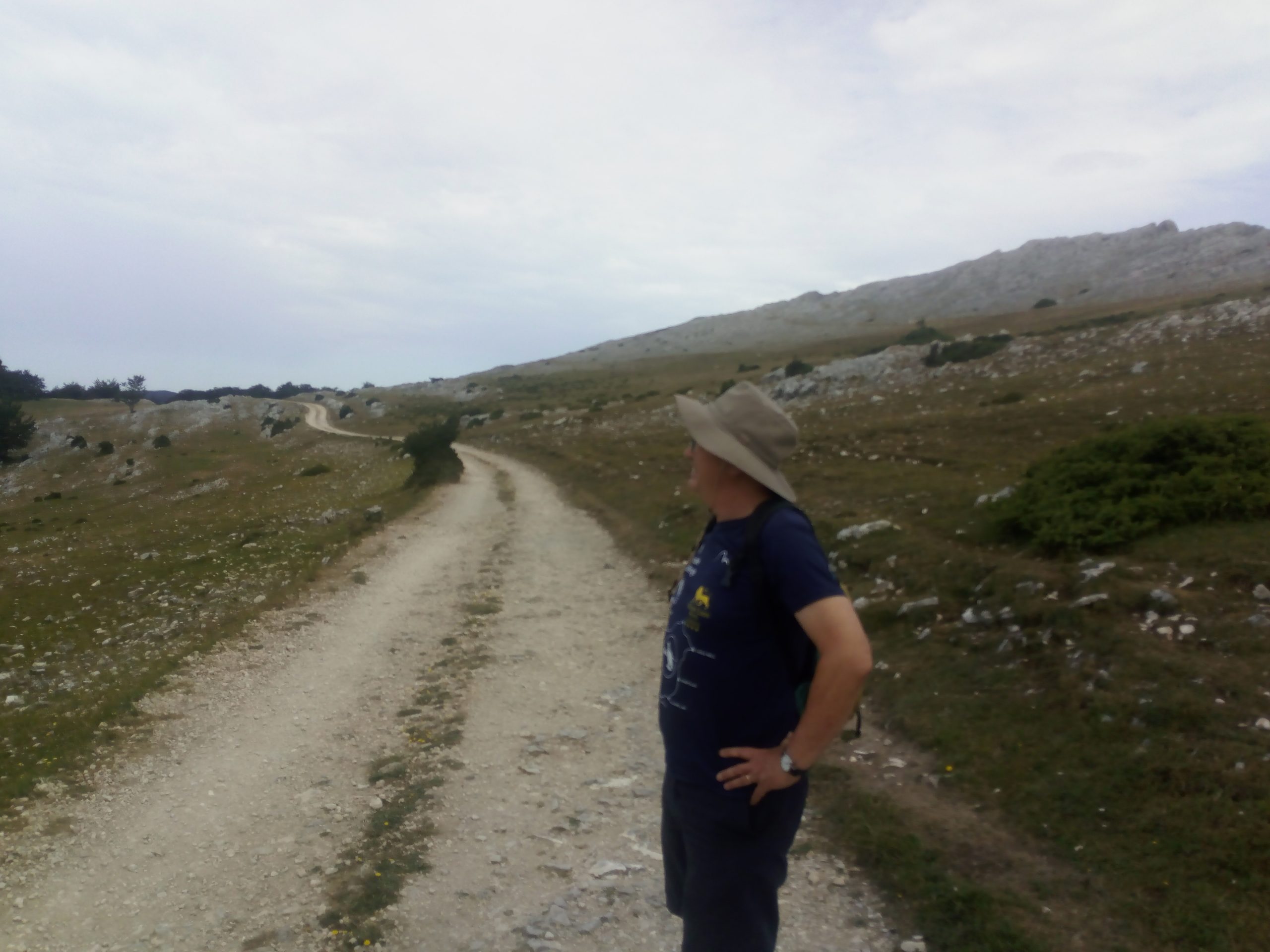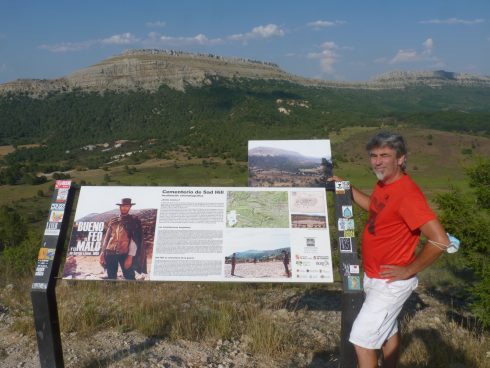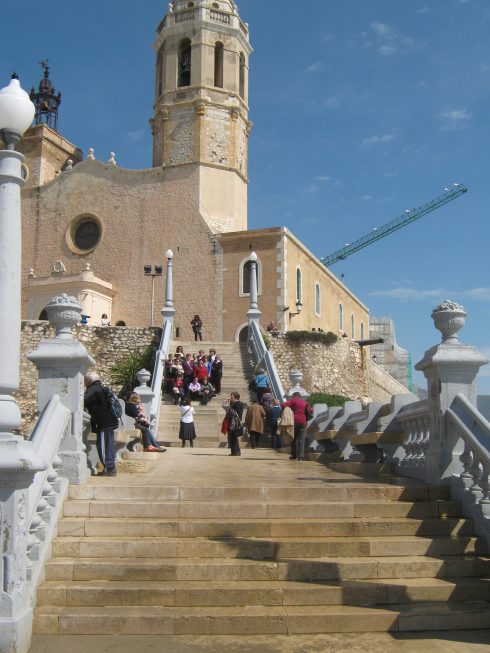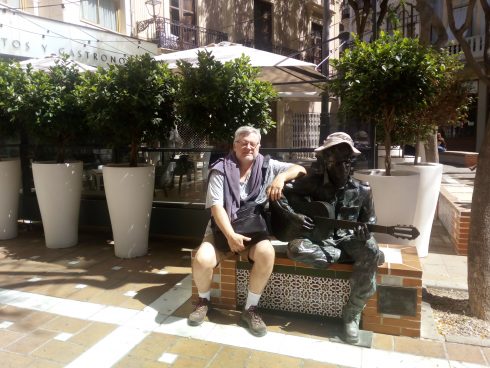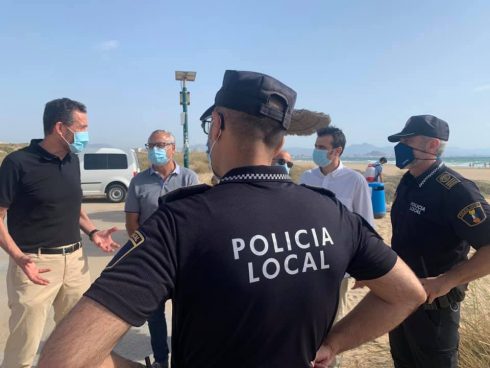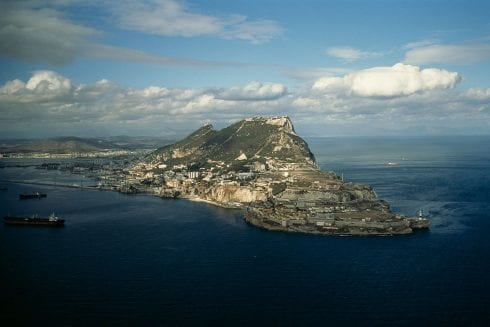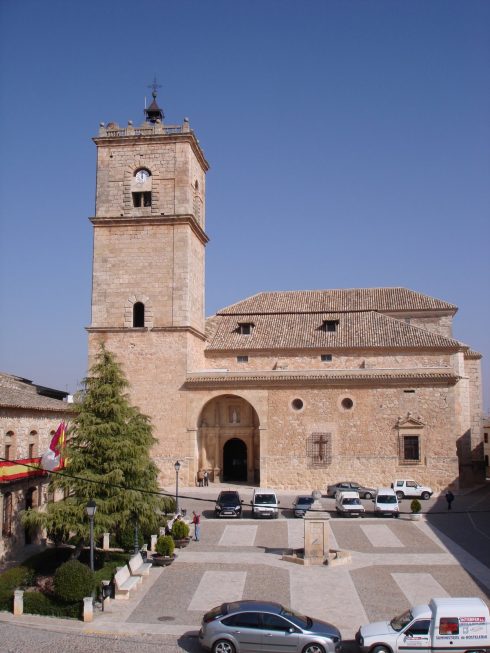
Urbasa is an open, green space in the north of Navarre, where many film makers have taken advantage of the lush greenery and the abundance of loose horses, cows and sheep.

Actually the horses were a little sheepish on our visit, which may be due to the presence of Thelma, who likes a little horse-flesh from time to time, not to mention a little horse-whipping, which I won’t.


The Battle of Britain (1969) was a film largely shot in Spain using outdated Spanish weaponry, especially planes and some of the aerial scenes of unmistakably English countryside were filmed along the Urbasa mountain range in Navarra, northern Spain.
Patton (1970) is a very special film, one that is admired by hawks and doves alike. According to Oliver Stone, it is the only film to have caused a war. Stone cites the effect that the film had on US President Nixon, who would apparently watch it over and over again, and whose decision to bomb neutral Cambodia during the Vietnam War was probably influenced as much by the film as by geo-political strategy.
There is a reason why the extras seem so happy as they march into war: this is not a film where actors pretend to be soldiers, but a film where soldiers pretend to be actors. In fact the Spanish army, with its out of date World War II equipment, was made available for the film, which was largely shot in Spain.
Even the opening speech in front of an enormous American flag was filmed at the Sevilla Studios in Madrid.
During the epoch when Patton was being made at the end of the Sixties, the Spanish army was very keen to collaborate and bring some sorely needed dollars into the economy; so much so that they even had an office whose job was to liaise with film makers. There is a Spanish army officer, Luis Martin Pozuelo, cited in the credits as military advisor.
The scenes, whether the Battle of the Bulge in Belgium (which was filmed in the mountains around Segovia, 80 miles north west of Madrid) or the advance across France after Normandy, (which was filmed on the Urbasa mountain range near Pamplona, Navarra) used Spanish scenery to add a touch of ‘realism’.
‘Patton’ won a fistful of Oscars and the music by Jerry Goldsmith was later used by the American army to boost the morale of their own troops during Desert Storm, although it would be undiplomatic to ask if they also used Spanish troops!
There is (or was before somebody trashed it) a plaque on the Urbasa range informing us that Cromwell (1970) was filmed there.
There is a wonderful anecdote that describes the scene in which English Civil War soldiers file past World War II soldiers on the sprawling green mountain range of Urbasa in Navarra, where ‘Patton’ and ‘Cromwell’ were being made at the same time.
The unspoilt scenery of this green meseta was ideal to depict the rolling meadows of 17th century England, and all the battles of Cromwell took place here with the inestimable (but paid) help of the Spanish army, which had shown its drilling excellence in the battle scenes of ‘Spartacus’, and once more manoeuvred on the battlefield like true professionals.
Two thousand extras from all over Spain made up the cavalry during six weeks filming, with the centre of operations being the village of Alsasua.
Today Urbasa is a popular area for trekking with extensive views to the dry south and the green north of the Basque Country, and the local tourist board has put up signs saying that the film was made there.
Robin and Marian (1976)
Richard Lester commented that the area looked like everyone’s idea of what England looked like in the twelfth and thirteenth centuries. The glades among the oaks where Robin acts out his second childhood do indeed seem to be as idyllic and halcyon as an English country beer garden.
Marian’s ‘Abbey’ was constructed especially for the film at the Urbasa mountain range, to the north west of Pamplona, where the final battle scene also took place.
Local expert Balbino García de Albizu informed us of the exact location of Hepburn’s convent, which was built at the Alto de Aranzaduia. This can be reached by taking the road from Zudaire on the southern side of the range, and at the top taking the left turn towards Vitoria for a couple of kilometres. It’s situated on the right.
More recently The Sisters Brothers (2018) starring Joaquin Phoenix, a western about bounty hunters with unfortunate nomenclature, was shot partly in Huesca province, using Pyrenees locations such as Hecho and a mountain refuge at Linza near Ansó.
Filming actually began in Almeria near Tabernas, and then moved on to Navarra, where in the Urbasa-Andia mountains, a base camp was set up at the mountain pass of Lizarraga. A large scale representation of 19th century Oregon was built there for filming between 29th June and 6th July 2017.
Filming also took place at locations at Sarasa, Manga de Sosa, Balcón de Pilatos, Limitaciones, Cabecera, Lezamen, Kataliturri and Ollide. The crew and actors stayed at Arbizu, and in bungalows at the Urbasa camp site.
Click here to read more News from The Olive Press.

